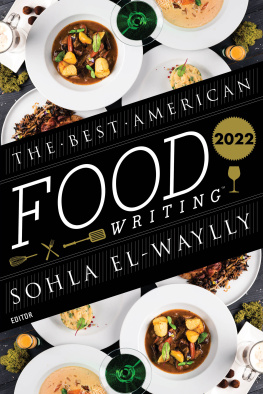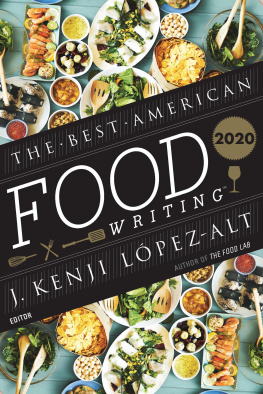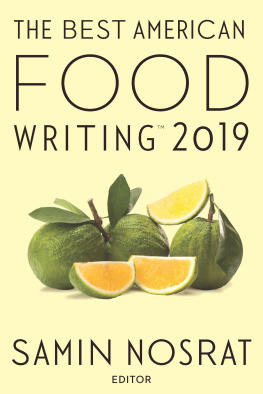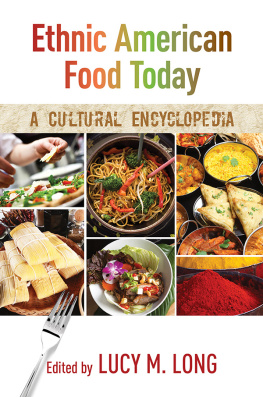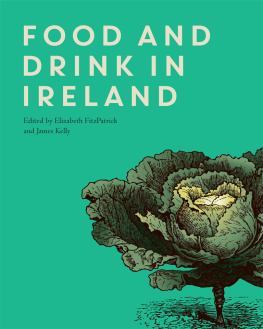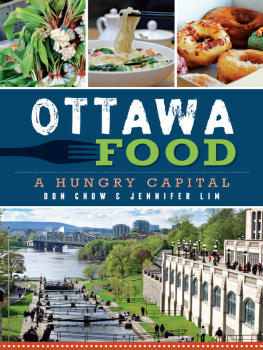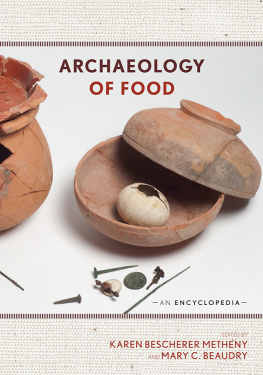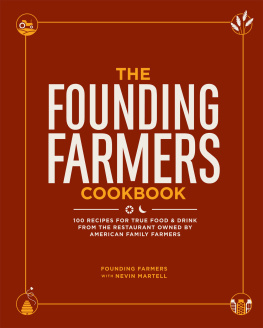Menu Design in America (with Steven Heller)
How Italian Food Conquered the World
The Italian-American Cookbook (with Galina Mariani)
Almost Golden (with Robert Mariani)
The Dictionary of Italian Food and Drink
The Four Seasons (with Alex von Bidder)
America Eats Out
Marianis Coast-to-Coast Dining Guide
Eating Out
Vincents Cookbook (with Vincent Guerithault)
The Dictionary of American Food and Drink

As ever,
for Galina
Contents
Preface
In Search of American Food
Three decades ago, when the first edition of this book was published, the question of what is American food was rarely a subject of serious consideration. Indeed, many observers of the food scene back then sniffed at the idea that American food was anything other than a mongrel cuisine that was never as good as the European or Asian originals and that, after all, most Americans ate processed food promoted by agribusiness and huge food corporations.
Now, in 2013, American food has become one of the most studied, written-about, and argued-over subjects of our culture. Food magazines abound, many with a special focus on a regional cuisine, others aimed at specific diets. Food sections in newspapers have expanded from being mere showcases for their advertisers, who always provided the recipes, to include everything from listicles of the ten best pizzerias to classic recipes for making whoopie pies. Food polemics top the bestseller lists, and television has found food shows to attract huge audiences devoted to celebrity star chefs and cooking competitions and reality shows in which egos are exalted and demolished every half hour. Restaurants have become topics of raging dissension on the Internet, and restaurant critics have been both deified and defiled on all sides.
None of this, I can assure you, was the case in 1977 when my wife and I drove cross-country for eleven weeks, with no firmer commitment than to see what we had not seen, learn what we did not know, and savor what we had not tasted. We began in NYC, went south, then west across Texas and over the mountains to California. Our return took us through the Grand Canyon, the flatlands of Kansas, and the snowy hills of the Midwest before ending on the edges of New England.
At that time I had no intention of compiling a gastronomic encyclopedia, nor of writing a book of any kind about American food. In fact, most of our meals on the road were disappointing, consumed in restaurants recommended by friends, editors, and guidebooks, the most thorough of which was the multivolume Mobil Travel Guide, an oil companys Baedeker with the uncanny ability to choose the most restaurants specializing in steaks, chops, and prime ribs. Depending on such a guide would lead a traveler to believe that Americans live on nothing but steak and potatoesa prevailing view in most peoples minds anyhow, and one the compilers of the Mobil Travel Guide took to heart.
One can hardly blame them, since even in the large cities and small towns of the South and the West, our request for a good meal was usually answered with directions to the nearest steak house. The best restaurant in town was invariably the kind of place peripatetic author Calvin Trillin spoke of when he described some purple palace that serves Continental cuisine and has as its chief creative employee a menu-writer rather than a chef. My wife was almost brought to tears at a penthouse restaurant atop a hotel in Birmingham, Alabama, when a waiter tried to make up for some stale shrimp cocktail with a sweet lime sherbet intended to clear the palate before moving on to a tough, burned steak.
What we found difficult to believe was that restaurants serving traditional, fine American cuisine were exceedingly difficult to find. The board members of local chambers of commerce, the businesspeople, and the tourist-information agents may eat in a wonderful little barbecue place on the outskirts of town, but without fail they would send the traveler to one of those hotel dining rooms where decor and situation mean far more than quality or integrity of food. So wed ply our way through a wretchedly made barnaise, wilted string beans amandine, filet mignon topped with canned liver pt, and mousse au chocolat with all the taste and texture of shaving cream.
Only with the greatest and most insistent effort did we ferret out a good American restaurant serving old-fashioned fare or just plain, well-made contemporary cookery. We found that most of the cooking of this sort, as the Time-Life American Cooking series indicated, was being done in the homes of Americans who were upholding a long and honorable heritage of baking, roasting, grilling, barbecuing, and mixingfrom frosted silver mugs of mint julep to tortillas with a salsa cruda more complex than any Gallic rouille.
We sampled excellent corn bread, made without sugar in the South, crabmeat dishes in Charleston that were creamy and full of the flavor of the Caribbean, and in the Southwest a bowl of fresh, fragrant guacamole.
But it was not only in the homes that we began to find American food: there were cafeterias serving well-made stews and perfect pies, diners where the German chocolate cake was hot out of the oven, a barbecue pit set up in what had once been an Army barracks, and pastry shops that served up the best muffins Ive ever had.
In New Orleans, we had red beans and rice and sampled beignets and chicory coffee in the French Market. There were walnut waffles in Greensboro and deep-fried, cornmeal-dusted catfish at a Vicksburg restaurant where we were entertained by an organ player wearing a VFW cap. We couldnt get enough of those succulent Gulf shrimp or of the pecan pie with peach ice cream in Georgia, and in Texas a meal of chili and ice-cold beer seemed one of the best things in the world as we listened to a jukebox full of Hank Williams classics. We were introduced to chimichangas in Arizona, enjoyed fresh game in Nevada, burgers of real substance in Los Angeles, and exquisite wines in the Napa and Sonoma valleys. Traveling back across the western Plains, we had fine roast beefs and sturdy pot roasts, breakfasts with hefty side orders of bacon, ham, grits, hash browns, and the inevitable orange slice. In a ski town in Pennsylvania, we warmed up with a white bean soup and, in New England, a pot of chowder made with quahog clams and topped with common crackers. Back in New York, we threw ourselves into every imaginable ethnic cuisinefrom Czech to Greek, from Szechuan to Hunan, from Moroccan to Korean. And there were plenty of prime steaks, black on the outside, pink within, sided with crisp, golden onion rings and cottage fries. We were soon trying to make up our minds whether to buy a Jewish cheesecake on the Lower East Side or an Italian cheesecake in Little Italy.
In the years since then, Americans have become more interested in more kinds of food than anyone might have imagined two decades ago. Much of the writing on food and wine continued to praise the products and preparations of chefs in Lyon, Munich, Florence, and Hong Kong, but along with the growth of the delicacy or gourmet shops in American cities came a reevaluation of the conclaves of ethnic cooking in our immigrant cities, which in turn led to a reappreciation of regional American dishes. And although the new boomtowns like Houston and Atlanta made fast progress in installing deluxe French restaurants in their new hotels, there arose an attendant interest in American cookery. Trendy city magazines might review the new nouvelle cuisine dining room downtown, but they would also scour the countryside to find the best pizza, the best cheesecake, the best ice cream, the best chili, or the best hamburger in the state. Even Julia Child began demonstrating how to prepare American dishes on her TV show.


